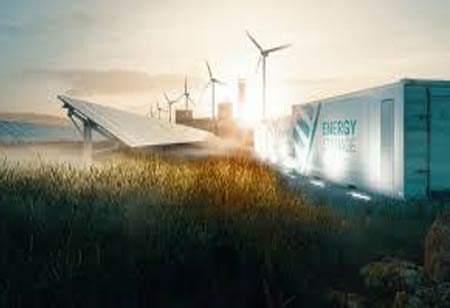Thank you for Subscribing to Energy Business Review Weekly Brief
The Dawn of Circular Energy Systems in Latin America
Latin America is transitioning to Circular Energy Systems, focusing on reuse, recovery, and regeneration to create sustainable energy models amid climate and energy challenges.

By
Energy Business Review | Thursday, August 14, 2025
Stay ahead of the industry with exclusive feature stories on the top companies, expert insights and the latest news delivered straight to your inbox. Subscribe today.
Fremont, CA: Latin America, rich in natural resources yet facing energy security and climate challenges, is at a pivotal juncture as its linear “take-make-dispose” energy model proves increasingly unsustainable and economically vulnerable. Consequently, a new paradigm is emerging: Circular Energy Systems. This approach emphasizes the design of energy systems for reuse, recovery, and regeneration, thereby transcending the mere generation of clean energy to establish a sustainable, closed-loop model.
The Pillars of a Circular Energy Economy
A circular energy system operates on three fundamental principles: reuse, recovery, and regeneration. Reuse focuses on extending the lifespan of energy-related products and components, such as repurposing solar panels that are no longer suitable for large-scale farms for use in smaller off-grid systems, or transforming discarded wind turbine blades into construction materials or furniture. Recovery centers on capturing energy and materials that would otherwise be lost, exemplified by waste-to-energy technologies that convert municipal waste into electricity or heat, biogas plants that process agricultural and wastewater into renewable natural gas, and urban mining that extracts valuable resources from end-of-life batteries and electronics. Regeneration aims to restore and enhance natural systems through the use of renewable energy sources—such as solar, wind, and hydropower—that replenish naturally, as well as integrated approaches like agrivoltaics, where solar panels installed on farmland enable simultaneous food and energy production while improving soil health.
Policy and Innovation: A Path Forward
Realizing the full potential of circular energy systems requires a coordinated commitment from governments, the private sector, and civil society. This involves implementing targeted policy measures that drive systemic change. One critical approach is Extended Producer Responsibility (EPR), which mandates that manufacturers take accountability for the entire lifecycle of their products, from production to end-of-life disposal and recycling. Additionally, incentives for green innovation—such as tax breaks, subsidies, and grants—can encourage the development of circular energy technologies and sustainable business models. Equally important is the standardization and certification of material reuse and recycling practices, ensuring clear, consistent benchmarks that build market trust and stimulate demand.
Innovative business models are likewise crucial. Startups are emerging that focus on creating local recycling hubs, developing modular and easily repairable energy technologies, and utilizing blockchain to trace materials throughout the supply chain. These efforts are not solely about environmental protection; they are about constructing resilient, decentralized, and economically viable energy systems for the future of Latin America. The transition to a circular energy economy is a marathon, not a sprint, but the region is already taking its initial, promising steps.






